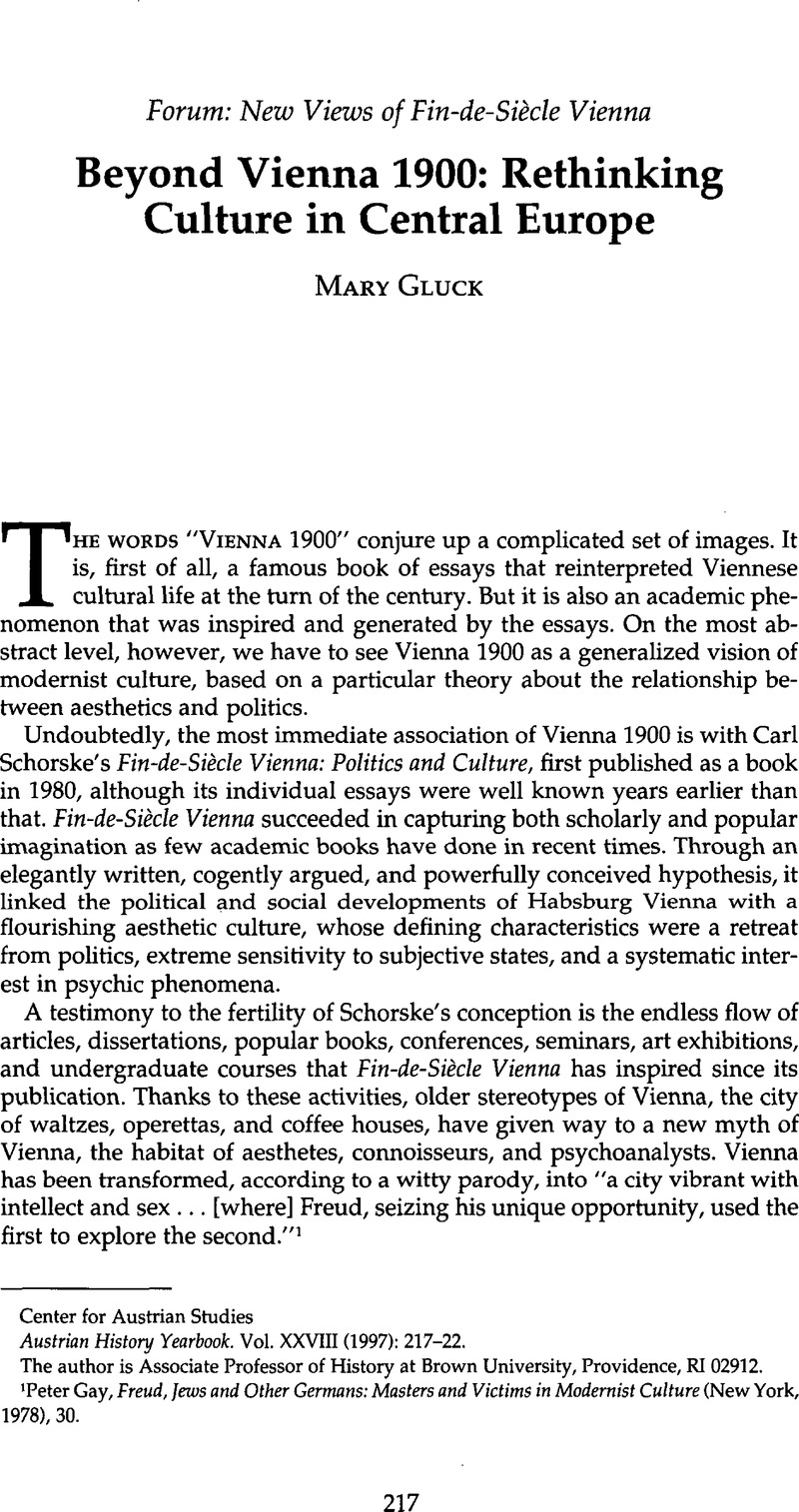Published online by Cambridge University Press: 10 February 2009

1 Gay, Peter, Freud, Jews and Other Germans: Masters and Victims in Modernist Culture (New York, 1978), 30.Google Scholar
2 Roth, Michael S., “Performing History: Modernist Contextualism in Carl Schorske's Fin-de-Siècle Vienna,” American Historical Review 99 (06 1994): 735–36.CrossRefGoogle Scholar
3 Roth, Michael S., ed., Rediscovering History: Culture, Politics, and the Psyche (Stanford, Calif., 1994), 3.Google Scholar
4 See in this volume Burri, Michael, “Theodor Herzl and Richard von Schaukal: Self-Styled Nobility and the Sources of Bourgeois Belligerence in Prewar Vienna”Google Scholar; Jensen, Robert, “A Matter of Professionalism: Marketing Identity in Fin-de-Siècle Vienna”Google Scholar; and Johnson, Julie Marie, “From Brocades to Silks and Powders: Women's Art Exhibitions and the Formation of a Gendered Aesthetic in Fin-de-Siècle Vienna.”Google Scholar
5 For a discussion of this problem, see Inglis, Fred, Cultural Studies (Oxford, 1993).Google Scholar
6 Huyssen, Andreas, After the Great Divide: Modernism, Mass Culture, Postmodernism (Bloomington, 1986).CrossRefGoogle Scholar
7 Chartier, Roger, “Intellectual History and the History of Mentalities: A Dual Re-evaluation,” in Cultural History: Between Practices and Representations, trans. Cochrane, Lydia G. (Ithaca, N.Y., 1988), 37.Google Scholar
8 Marcus, George E. and Meyers, Fred R., “The Traffic in Art and Culture: An Introduction,” in The Traffic in Culture: Refiguring Art and Anthropology (Berkeley, 1995), 6.Google Scholar